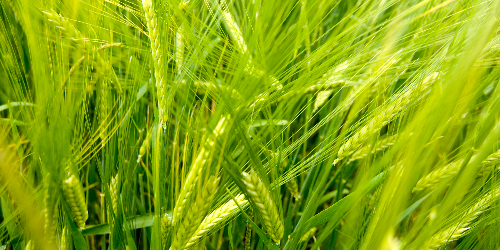The main factors of barley agriculture are: mineral fertilization, sowing time and density, and plant protection against weeds, diseases and pests.
The size and quality of the barley grain yield are decisively affected by varied fertilization with nitrogen, phosphorus and potassium.
Nitrogen is an element that strongly affects the increase in grain and straw yield (up to a certain limit) and the increase in protein content in the grains. In order to avoid excessively high protein content, which has a negative impact on the brewing quality, the dose of nitrogen for malting barley cannot be as high as for fodder and groats. Determining the optimal dose is difficult, as it depends on the accurate determination of the soil's abundance in this component. Higher fertility can be expected on compact soils (very good or good wheat complex), in a post-root site (especially beetroot). Under such conditions, the optimal dose is 25-30 kg N/ha. In a post-wheat site, 35 kg N/ha on wheat complexes and 45 kg N/ha on very good rye complex can be recommended.
In the case of high wheat yield (above 6 t/ha), these doses should be increased by 10-15%. Too high N doses reduce grain accuracy and malt extractive.
A good phosphorus supply in plants prevents their lodging, accelerates development, positively affects the grains' brewing value, and especially the extractive of malt.
Potassium reduces the plant's susceptibility to disease and promotes better grain filling. The protein content then decreases and the number of carbohydrates in the barley grains increases, which improves grain accuracy, malt extractive and Kolbach index.
Phosphorus-potassium fertilizers should be sown before winter plowing, and nitrogen fertilizers before sowing barley. The recommended doses of phosphorus and potassium depending on the soil's abundance in these components and the size of the expected yield. With their very low content in the soil, the recommended doses per ha are: 60-80 kg P2O5 and 75-100 kg K2O; with a low content of ingredients: 45-65 kg P2O5 and 65-80 kg K2O; with average content: 35-50 kg P2O5 and 45-70 K2O; with high content: 20-35 kg P2O5 and 25-35 kg K2O. When expecting high yields, the upper end of the ranges should be taken into account.
Fertilization technologies
Taking into account the different expectations of farmers in terms of crop nutrition, we have prepared for you three complete proposals for foliar fertilization.
The following technologies have been prepared in response to these expectations, in order to optimally nourish the crop and are for reference. If you have any questions regarding the details of the technology and the adjustment of the individual dosage of the indicated products, we invite you to contact our Team.
















